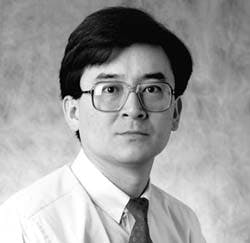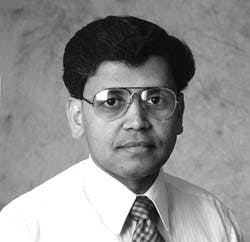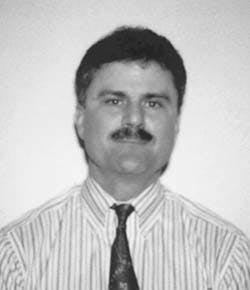Raghu Menon, Ting Chou, Satish Tamhankar
BOC Group Inc.
Murray Hill, N.J.
Ram Ramachandran
BOC Gases
Murray Hill, N.J.
Randall Hull
BOC Gases-Americas
Murray Hill, N.J.
Richard Watson
BOC Gases-Europe
Surrey, England
Regenerator oxygen enrichment on fluid catalytic cracking units (FCCUs) can be a powerful debottlenecking option. Oxygen enrichment also increases operating flexibility in the longer term.
A properly chosen oxygen-production process can benefit the overall refinery from a perspective of atmospheric gas requirements, as well as allow for capital expenditures on other process options.
In this first of two articles, a review of oxygen production options and the results of materials compatibility tests will help refiners select an appropriate oxygen supply scheme. The concluding article will examine the effects of oxygen enrichment on emissions of NOx and SOx.
Oxygen enrichment
The need to upgrade heavy hydrocarbon streams to produce lighter, more-valuable products at low cost has pushed catalytic cracking units to one or more operating constraints. Whereas some operating constraints are relatively easy to overcome, others require large capital investments.
A principal set of unit constraints are those associated with the amount of air required to combust coke off the spent catalyst. One such constraint is the limiting amount of air that can be discharged through the air grid into the regenerator by the unit air blower. Air's density is lower during the warmer summer months, causing this limitation to be further emphasized during that season.
Other related constraints are associated with:
- Velocity and erosion considerations in various portions of the regenerator and downstream equipment
- Unit pressure considerations
- Coke-combustion kinetic constraints
- Flue gas particulates considerations.
The use of oxygen-enriched air for combustion can help alleviate some or all of the above-mentioned constraints. Oxygen-enriched regenerator operation can be utilized to increase throughput, conversion, or both. In addition, enrichment can increase resid addition to the unit without compromising the effectiveness of catalyst regeneration.
The use of enrichment also can allow for readjustment of the unit pressure balance so as to obtain relief from other unit limits, such as constraints related to wet gas compression and catalyst circulation.
FCC oxygen enrichment can permit reoptimization of not only the cracking unit, but also the refinery as a whole. More than 20 refineries across the U.S., Canada, and Europe are successfully, and without incident, using this technology.
Advancements
Developmental advances in air-separation technology, especially over the last decade, and the benefits of debottlenecked cracking units, have substantially improved the cost-effectiveness of oxygen enrichment.1 For some operating units, the small temperature increase due to enrichment (typically about 7 F. for each 1% of enrichment) previously had precluded high levels of enriched oxygen usage.
Improvement in design, and especially operability, of catalyst-cooling devices, and the widespread use of lower-delta-carbon catalysts, render higher enrichment levels an attractive, viable option.2
Refiners with surplus wet-gas capacity successfully have recycled naphtha and light gas oils to increase riser-side heat requirements, thus permitting higher levels of oxygen usage.
In addition, the decreasing sulfur levels desired in refined products, coupled with the desire to continue to process medium and high-sulfur crudes, has pushed many sulfur-recovery units close to constraints. Consequently, projects involving the use of oxygen enrichment of sulfur units also have become attractive.
A good review of oxygen-based sulfur recovery technology was presented recently in Sulfur magazine.3 A strong driver for oxygen enrichment of sulfur-recovery units and FCCUs is the low capital requirement and high debottlenecking capability associated with these projects.
Reports published on commercial FCC trials include both calculated and observed effects on unit heat balance parameters.4-8 This article focuses on other aspects of FCC oxygen enrichment vital to the relevance of the technology in today's refineries.
Oxygen supply means
The utilization of the optimal gas-supply scheme is key in ensuring the maximization of short-term and long-term benefits for the refiner.
Oxygen supply for refining and petrochemical processes may be provided by on site plants or pipeline supply. Becoming increasingly popular are "over the fence" supply arrangements, where the gas manufacturer owns and operates a dedicated oxygen plant, while power and utilities are typically supplied by the refiner.
On site gaseous oxygen supply typically has been provided by one of four options:
- Liquid oxygen (LOX), trucked in and subsequently vaporized
- Pressure swing adsorption (PSA) or vacuum swing adsorption (VSA) technologies
- Traditional cryogenic distillation
- Enriched-oxygen vent streams from cryogenic nitrogen plants.
The choice of technology is largely determined by gas tonnage and purity requirements, and the utilization pattern. For an FCC processing 25,000 b/d feedstock, the amount of oxygen typically required for enriching the combustion gas to oxygen levels of 25% (4.1 vol % oxygen enrichment) and 30% can be expected to be about, respectively, 170 ton/day and 385 ton/day.
Most FCCUs process between 15,000 b/d and 100,000 b/d of feedstock. Table 1 summarizes expected ranges for oxygen requirements and the percentage of incremental coke-burn capacity for various levels of oxygen enrichment.
For most cases in the range of contemporary interest, FCC oxygen requirements exceed 70 tons/day. This quantity could justify the utilization of oxygen in the refinery sulfur-recovery unit. The oxygen requirement to increase the capacity of a 200 ton/day sulfur unit by 40% would be 40-75 tons/day.
The use of liquid oxygen (LOX) is an economically feasible option for enrichment trials, for sporadic and fluctuating oxygen needs, and where very low tonnage is required. For other applications where the overall oxygen usage on one or more units, including Claus sulfur plants, approaches a more continuous day-to-day requirement, LOX supply fails to capture the economic benefits of the other available on-site technologies.
PSA plants have multiple adsorption beds which are operated in a cyclic manner. During the production step, feed (purified air) is introduced at pressure and one of the major components is adsorbed selectively. During the regeneration portion of the cycle, this component is desorbed at lower pressure, typically atmospheric, and thus separation is achieved.
In VSA plants, the regeneration step is performed under vacuum (Fig. 1).
Modern pressure adsorption, PSA, and VSA cycles incorporate a number of additional steps to improve separation characteristics and maximize energy efficiency. Operation of these plants has become highly automated.
For requirements less than 50 tons/day in locations where power costs are low, PSA units may be more economical because their capital costs are lower at the expense of higher power consumption.
Traditional distillation plants have been used for large tonnage requirements of high-purity oxygen. These plants are based on compression followed by cryogenic distillation.
Enriched-oxygen vent streams from existing nitrogen plants also can be used. This option usually provides limited constraint relief on the FCC and sulfur plants, however, because the availability of this gas, which contains low concentrations of oxygen, is limited by the size of the nitrogen plant.
BOC Group has developed an improved cryogenic oxygen (ICO) plant designed from the perspective of meeting the total atmospheric gas requirements of key industries, including petroleum refining. This plant design is particularly well-suited for oxygen requirements of 70-350 tons/day, although higher tonnage designs are practical as well.
Figs. 2 and 3 summarize the appropriate oxygen-supply technology, based on tonnage requirements and for different power costs. The choice, however, is highly dependent on specific application criteria.
Power costs typically represent 30-40% of the total on site oxygen cost, with the lower range observed on larger cryogenic and ICO plant designs.
Other important benefits of ICO plants are:
- Oxygen with purity levels of 90-98% can be produced in the pressure range of 5-230 psig without requiring post-compression using expensive oxygen compressors. The cycle on which these plants operate takes advantage of the fact that the purity of the product can be less than that produced using the conventional cryogenic method.
- With basically no additional cost, as much as 25% of the oxygen plant rating can be available for nitrogen production. Nitrogen produced by this method contains as little as 100-1,000 ppm oxygen.
- About 0.55% of the product can be made and stored as liquid oxygen and, with some minor modification, the amount of LOX produced for backup can be increased to about 5%. Alternatively, liquid nitrogen can be produced.
- No special noise-attenuation equipment is required, unlike the competing technology in the range, namely VSA.
Advancements
Technology developments over the last 2 years have reduced plant capital costs by more than 15% and specific power requirements by almost 10% for oxygen produced in the pressure range of 20-50 psig.
The advent of new, integrated technologies and more efficient methods of plant operation afford the possibility of oxygen costs significantly less than 20/100 scf of oxygen. In contrast, for LOX, prices can even exceed 45/100 scf.
For regeneration, FCC feedstock typically consumes between 450 and 700 scf oxygen/bbl. The additional operating cost per barrel of feedstock is summarized as a function of oxygen cost in Table 2.
Table 2 illustrates the possibilities afforded by new, highly integrated oxygen-generation technology. It is interesting to note that refiners have found net benefits of oxygen enrichment even for LOX-based supply.
Whereas operating costs are higher for heavier feedstocks, which consume more oxygen per barrel, the overall refinery benefits of processing them in the cat-cracker also are higher. The authors also expect utilization of oxygen enrichment to increase the attractiveness of several other FCC technology options, such as catalyst coolers and reactor-side, recycle-based technologies including riser naphtha quench.
Material safety
Experience with handling elemental oxygen or oxygen-enriched air previously was not widespread in the refining industry. Most refining process units, including FCC regenerator components, were not designed to handle oxygen-enriched air streams.
A strong concern related to the use of oxygen-enriched air is associated with the compatibility of the unit engineering materials with oxygen at the process temperatures and gas compositions found in an FCCU. The specific considerations of materials compatibility with oxygen in this context involve the resistance of the relevant materials to ignition and combustion.
There are considerable experimental data regarding the combustibility of some of these materials under oxygen-enriched conditions. The majority of materials flammability testing, however, has been performed at ambient temperature, high pressures, and with oxygen of relatively high purity in order to address issues associated with cylinder gas.
As a result, there has been much industry speculation regarding recommended enrichment limits on the basis of insufficient or inappropriate technical data.
It is known that temperature influences the flammability of materials. Because testing at high levels of oxygen purity has shown that the parametric response of material burn characteristics is highly nonlinear, extrapolating these results to very different conditions is not recommended.
To begin addressing concerns relevant to refining and chemicals applications, BOC Group has been performing oxygen-compatibility studies for typical refining unit materials under process conditions.
The following section summarizes a short report on the evaluation of the oxygen compatibility of process materials used for regenerator vessel internals, air-blower components, and oxygen delivery systems.
Test methods
Careful selection of materials for applications in oxygen-rich atmospheres should depend on their performance in tests in four main categories: promoted combustion tests, ignition tests, configurational tests, and component tests.
Promoted combustion tests typically are the first tests performed to determine a material's resistance to burning when it is surrounded by an ignited promoter known to be highly flammable. Using this test, the flammability of materials can be ranked at specific conditions of oxygen purity and temperature, based on the minimum pressure required to sustain combustion.
This pressure usually is referred to as the threshold pressure required for the material to support combustion, and the environmental conditions usually referenced are pure oxygen at ambient temperature.
If the material does not perform adequately in the promoted combustion test (i.e., if the threshold pressure required to support combustion is lower than the maximum process pressure endured by the component), ignition tests are performed. These tests, including particle-impact tests or frictional-heating tests, are performed to determine the ignitability (ignition resistance) of the material.
Materials which are flammable and ignitable still may be used for certain applications based on their performance in configurational tests, which test prototypes simulating the component geometry under process conditions. Finally, if required, component tests are performed on the actual components.
The test results discussed in this article are from promoted combustion tests, which are used extensively for material selection for oxygen applications. The tests were performed as per NASA's NHB 8060.1C Test 17 protocol, and other methods.9 10
The experimental setup consists of a chamber with a sapphire view port. The chamber is filled with the test gas and maintained at the temperature and pressure conditions to be tested.
Test samples are 6-in. cylindrical rods with a diameter equivalent to the thinnest process section of interest. Cylindrical rod specimens are the standard choice for conservative, reproducible testing.
The test sample, with a combustion promoter attached at the bottom, is suspended vertically in the test chamber. The promoters used in the studies cited here included titanium and magnesium, which are known to have very low combustion resistance and other suitable promotion characteristics.
A vertical material orientation is preferred because, among other reasons, material samples have the lowest combustion threshold when oriented vertically.10 11
During testing, the samples were maintained at the required temperature by heating with induction coils. A standardized metal wire system was used as the igniter.
The tests were designed to evaluate the ability of selected samples to self-extinguish under conservatively chosen process conditions. The authors expect the test procedure used to be certified by ASTM shortly.
Summarized in Table 3 are the conditions for some of the relevant materials testing performed.
A common material of construction for regenerator components, including the air-grid and nozzles, is 304 SS. This material, and other grades of stainless steel, were found to have good resistance to combustion, even in environments with high oxygen-enrichment levels at ambient temperature.12
Material samples with diameters as small as 1/8 in. would not combust in an environment simulating regenerator pressure and temperature conditions and containing as much as 40% oxygen in nitrogen. Because even the titanium promoter would not support combustion under these conditions, grooves were cut into the steel, and the aluminum-palladium ignitor wires were wound into the grooves to force melting.
The samples still would not support combustion. The samples, therefore, are not expected to combust in milder environments, such as oxygen-enriched regenerator environments containing much less oxygen in combination with oxides of carbon. (Evaluations have not been completed under these conditions.)
Because the concentration of oxygen decreases rapidly upon injection into the regenerator, these test conditions could be interpreted as being extremely conservative, even for high levels of oxygen enrichment.
Carbon dioxide was not added to the gas environment because earlier studies on 316L SS showed that the combustion-pressure threshold of materials is higher in oxygen/carbon dioxide environments than in oxygen/nitrogen atmospheres.9
Another class of materials of interest contains some of the hard, 400-series stainless steels. Previous studies have found that the hard, martensitic structure of these 400-series steels, such as grade 410, makes them even less combustible than 304 SS and 316 SS.
For example, in low-temperature tests performed in 99.99% pure oxygen, 0.25-in. rods made of 410 SS did not completely combust at pressures of 700-1,200 psig (relative to the threshold pressure of 725 psig determined for 304 SS under the same conditions). In the same study, samples of the soft 430 grade were found to have a pressure threshold of 750 psig.11
Other materials of interest to refiners, such as stellite 6 and silicon carbide, were not tested because they are known to have superior combustion resistance, much like brass, copper, and Inconel 600.
Another critical piece of equipment is the regenerator air main, which typically is made of carbon steel. For testing, grade A106B samples with diameters as small as 1/8 in. were selected. These samples were considerably thinner than the range expected for these materials as applied in an FCCU (3/8 in. to 1/2 in.).
Because the titanium promoter would not combust under the test conditions with 35% oxygen in nitrogen, the ignitor was brought into intimate contact with the samples, as was done for the other cases. Although the samples were forced to melt, the carbon steel would not combust under these conditions.
Other carbon steels used for this application, such as A285-C and A212-B, can be expected to behave similarly to the A106B. Others series, such as A387 and A385, would be expected to show even better resistance because of their chromium content (chromium has a threshold pressure of 800 psig, relative to 70 psig for iron).
The thin A106 specimens could not be combusted in 40% oxygen environments, even when the sample temperature was increased to 1,300 F., which is as severe as the conditions encountered inside regenerator vessels. At these temperatures, the sample was rapidly coated with a layer of surface oxide, which was not observed on specimens tested at about 350 F.
Other materials tested include those used for air-blower components such as the impeller, diffuser, shroud, and scroll. Judgment was used to screen and test the commonly used materials most likely to fail.
Testing on A1 alloy 6061-T6 indicated that it did not burn in 40% oxygen, even when the sample temperature was increased to about 590 F., which is well beyond the temperatures encountered in blower environments. Besides this alloy, cast aluminum alloys and other key materials used for air-blower components were tested.
Based on the materials studies, the authors conclude that, although the delivery systems for pure oxygen at high velocities and pressures require materials known to have high oxygen compatibility, the typical refinery materials selected for testing performed well in low-pressure, 35% oxygen-enriched streams.
For application in FCC and Claus units, pure oxygen is injected through custom-designed Monel diffusers into the air mains. The use of properly designed diffusers would ensure the absence of droplet condensation.
A straight run of eight pipe diameters is recommended downstream of the injection point. This requirement may be relaxed, after adequate inspection, if the enriched air velocity is 100 fps or less.
BOC Gases' testing also has indicated that, for many materials, oxygen enrichment on the suction side of the blower can be safe and attractive, as long as care is taken regarding the choice of any non-metals and lubricants which may be exposed to enriched oxygen. In addition, personnel with specific technical expertise should be consulted regarding materials choice and maintenance issues.
In such cases, it is also important to ensure the absence of catalyst fines and general cleanliness in the vicinity of the air intake system.
References
1. Menon, R., Hull, R., Watson, R., Tamhanker, S., and Ramachandran, R., "FCC Regenerator Oxygen Enrichment," 1995 NPRA annual meeting, Mar. 19-21, San Francisco.
2. Myers, D.N., Knapik, P.G., Lacijan, L.A., and Brandner, K.J., "Improved Resid Processing in FCC Units with Catalyst Coolers," 1994 NPRA annual meeting, Mar. 20-22, San Antonio.
3. Connock, L., "Oxygen Technology in Claus Plants," Sulphur, No. 235, November-December 1994.
4. Perez de Haro, J., Gonzalez, A.J.B., Schroder, N., and Stenberg, O., "O2 enrichment increases FCC operating flexibility," OGJ, May 11, 1992, p. 40.
5. Macerto, F., and Anderson, S., "O2 enrichment can step up FCC output," OGJ, Mar. 2, 1981, p. 101.
6. Elvin, F.J., and Milne, R., "FCC heat balance key to high O2 enrichment," OGJ, Feb. 28, 1983, p. 84.
7. Hansen, T.S., "Study shows oxygen/resid relationship in FCC operations," OGJ, Aug. 15, 1983, p. 47.
8. Bhasin, D.P., and Liebelson, M.S., "Oxygen Increases FCC Throughput," Hydrocarbon Processing, September 1983.
9. Stolzfus, J.M., et al., "ASTM Committee G-4 Metals Flammability Test Program: Data and Discussion," Flammability and Sensitivity of Materials in Oxygen-Enriched Atmospheres, Vol. 3, ASTM STP 986, ed., D.W. Schroll, ASTM, Philadelphia, 1989.
10. NHB 8060.1C, Test 17, "Upward Propagation," Office of Safety and Mission Quality, NASA, April 1991.
11. Zabrenski, J.S., Werley, B.L., and Slusser, J.W., "Pressurized Flammability Limits of Metals," Flammability and Sensitivity of Materials in Oxygen-Enriched Atmospheres: Vol. 4, ASTM STP 1040, ed. J., Stolzfus.
12. McIlroy, K., Zawierucha, R., "The Effects of Testing Methodology on Promoted Ignition-Combustion Behavior of Carbon Steel and 316L Stainless Steel in Oxygen Gas Mixtures," Flammability and Sensitivity of Materials in Oxygen-Enriched Atmospheres: Vol. 4, ASTM STP 1040, ed., J. Stolzfus.
The Authors
Copyright 1996 Oil & Gas Journal. All Rights Reserved.








